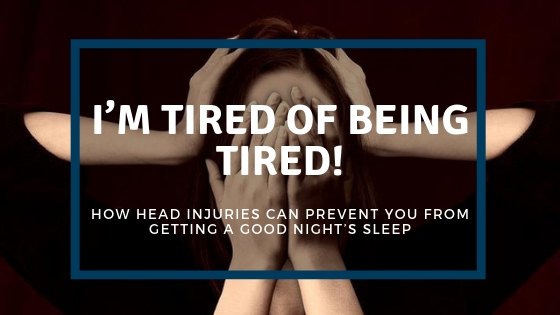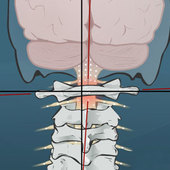- Home
- Looking For Help
- Team
- Community Initiatives
- Blogs
- Contact
- For Health Professionals
Dizziness and Headaches - What’s the ConNECKion?
When asked what symptom people with chronic headaches would prefer never to have again, the most common answer is dizziness. Dizziness and headaches are some of the most common symptoms that frequently occur together. In fact, if you were to do a quick WebMD search, you would find that dizziness and headaches are associated with 90+ different conditions ranging from mild traumatic brain injury, such as a concussion, to sunburns. So, what is the connection between these two symptoms?
Let’s start with the Neck!
The neck is a vital and complex region of the body that supports our head and allows our brain to communicate with the rest of the body. The average adult head weighs between 10-12 lbs and is balanced on a 2 oz ring of bone called the atlas (C1). While this design may seem flawed, there are approximately 44 muscles, and a near equal number of ligaments, that support our head and neck and communicate with our brain about where our body is in space.
 Neck injuries, such as whiplash injuries or chronic repetitive stress injuries (such as poor posture), can cause the joints in our neck to lock up in an abnormal position leading to a restricted range of motion and increased muscle stiffness. When our joints are not moving properly, the surrounding muscles and ligaments send incorrect information to the brain which can often lead to feelings of imbalance, unsteadiness, and light-headedness. In addition, the increased muscle stiffness can trigger referred pain and pressure that may be felt in the forehead, temples, and base of the skull. This is characteristic of the classic tension-type headache - the most common type of headache reported. Treating the underlying neck dysfunction may be as simple as correcting your posture and can dramatically reduce these symptoms.
Neck injuries, such as whiplash injuries or chronic repetitive stress injuries (such as poor posture), can cause the joints in our neck to lock up in an abnormal position leading to a restricted range of motion and increased muscle stiffness. When our joints are not moving properly, the surrounding muscles and ligaments send incorrect information to the brain which can often lead to feelings of imbalance, unsteadiness, and light-headedness. In addition, the increased muscle stiffness can trigger referred pain and pressure that may be felt in the forehead, temples, and base of the skull. This is characteristic of the classic tension-type headache - the most common type of headache reported. Treating the underlying neck dysfunction may be as simple as correcting your posture and can dramatically reduce these symptoms.
Changes in Blood Flow
Have you ever stood up too quickly and felt the initial lightheadedness and unsteadiness as blood flow is momentarily reduced to your brain? Typically, this sensation is transient. We have several built-in mechanisms to ensure our body quickly adapts to pump blood to our brain so that we do not pass out. Our brain is a very energetically expensive organ, using about 20% of our body’s metabolism to function. Changes in blood flow to our brain can occur with postural changes, dehydration, or hypertension, and it may be associated with certain types of headaches, such as migraines.
Migraines are a severe type of headache that may be associated with a host of unusual symptoms including nausea, numbness, visual changes, and dizziness. While it is not fully understood what specifically happens in the body to cause a migraine, one theory looks at changes in hormones and neurotransmitters that may trigger constriction of the blood vessels in the upper neck and brain resulting in the diverse symptoms characteristic of a migraine. For example, when this constriction occurs in blood vessels near structures associated with the inner ear, it can trigger sensations of spinning, imbalance, nausea, and vomiting. In fact, there has been an associated increased risk for young people who experience migraines and the future development of benign paroxysmal positional vertigo (BPPV), the most common cause of episodic dizziness.
 In addition, having an underlying neck injury can predispose a person to be more sensitive to certain migraine triggers such as weather changes. The upper neck acts like a bottlecap that allows fluid to flow to and from the head and body. An injury to this area can constrict this fluid flow, resulting in a sensation of increased pressure in the head. For some people, this may be associated with an increased risk of developing a migraine.
In addition, having an underlying neck injury can predispose a person to be more sensitive to certain migraine triggers such as weather changes. The upper neck acts like a bottlecap that allows fluid to flow to and from the head and body. An injury to this area can constrict this fluid flow, resulting in a sensation of increased pressure in the head. For some people, this may be associated with an increased risk of developing a migraine.
While these are some of the less talked about factors contributing to dizziness and headaches, lifestyle is another important consideration to keep in mind and includes the roles of sleep, diet, and stress management. In some instances, there may be a simple solution such as postural correction or a specific exercise; in other cases, taking a holistic lifestyle approach is required to control, reduce, and prevent episodes of dizziness and headaches. Our team of trained NUCCA practitioners are fully equipped and eager to help you uncover the root of your dizziness and headaches and get you back on your feet doing the activities that you love!
References:
https://www.ncbi.nlm.nih.gov/pmc/articles/PMC4491067/

Dr. Michelle Speranza
NUCCA Chiropractor
The Vital Posture™ Clinic
Calgary, Canada
Whiplash Injuries - What You Need to Know
Winter is here, and with it comes all the tasks of winterizing our homes and cars, but have you ever thought about winterizing your body? With the increased risk of slips and falls and motor vehicle collisions, we often see a rise in whiplash-type injuries during this time of year. Here is what you need to know to protect yourself this coming season:
Whiplash Quick Facts
- A whiplash injury is one of the most common types of neck injuries. Our head and neck have a large range of motion, and with this comes an inherent lack of stability. Because of this lack of stability, the neck is predisposed to a greater risk of injury when large forces are applied to the body, such as in a whiplash injury.
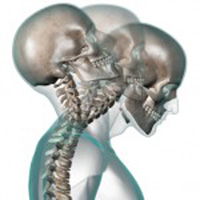
- Whiplash is a mechanical injury to the neck caused by the rapid acceleration and deceleration of the body. The ligaments of the neck can support an average of 45-88 lbs of force; a whiplash injury sustained in a 15 km/hr collision can introduce up to 160 lbs of force to the body! This force is equivalent to catching a 200 lb bag of cement dropped from a second storey window which can cause an injurious sprain of the ligaments and supporting structures of the neck.
- Though whiplash injuries are common in motor vehicle collisions, they can also be sustained in sports accidents, amusement park rides, and everyday slips and falls.
- Common symptoms of whiplash injuries include neck pain, shoulder pain, jaw pain, headaches, dizziness, and numbness and tingling in the arms.
Whiplash Myths
Myth: Less damage to the vehicle means less chance of injury.
Fact: It has been found that less damage to the vehicle means that more energy from the collision was transmitted to the occupants of the vehicle. This makes sense when you go back to high school physics and the law of conservation of energy, which states: ‘Energy can neither be created nor destroyed but only transferred from one form to another’. Vehicles that sustain more damage in a collision will absorb more of the energy on impact, and thus less energy will be transferred to the occupants.
Myth: Being relaxed at the time of impact reduces the chance of injury.
Fact: It takes about 200 milliseconds for the muscles in your neck to engage in a guarding mechanism to stabilize the joints in your neck. Initial damage from a whiplash injury sustained in a motor vehicle collision occurs between 50-100 milliseconds – before your muscles have even had a chance to activate! Ligamentous/neck sprain injury occurs so early in the collision that being in a relaxed state can actually augment the initial injury.
Myth: If an injury was sustained in a collision, symptoms will appear immediately.
Fact: Symptoms of a whiplash injury may appear soon after the impact or be delayed by hours or up to a couple of days. Whiplash soft tissue injuries can take up to 12 months to heal.
Are You Crash Proofed?
 Knowing what to do before and after a collision can help protect you and reduce the risk of long-term side effects. Things to keep in mind include making sure your headrest is set appropriately and being aware of your surroundings so that if you anticipate a collision, you can guard yourself more effectively.
Knowing what to do before and after a collision can help protect you and reduce the risk of long-term side effects. Things to keep in mind include making sure your headrest is set appropriately and being aware of your surroundings so that if you anticipate a collision, you can guard yourself more effectively.
When it comes to setting your headrest correctly, make sure the centre of the headrest is at the top of your ears and that your head sits no more than six centimetres in front of it. This placement helps to reduce the distance your head will move during an impact.
If you anticipate that a collision is going to occur, make sure to sit in a neutral position with your head facing forward and push back gently into your headrest. This position helps to engage your muscles and stabilize your neck, which will help to reduce the risk of ligamentous injury.
Finally, if you have been in a collision, be sure to get assessed as soon as possible by a health care practitioner who understands the mechanics of a whiplash injury. Symptoms may have a delayed onset, and early intervention is key to avoiding long term side effects. If you or someone you know has suffered a whiplash injury, chat with one of our NUCCA doctors to see how they may be able to help.
Don’t get caught off guard this winter. Knowing what to do in the event of an accident or injury is the first step to help enjoy all the season has to offer!

Dr. Michelle Speranza
NUCCA Chiropractor
The Vital Posture™ Clinic
Calgary, Canada
Is My Posture Making Me Dizzy?
What is dizziness?
Dizziness is often described as a sensation of lightheadedness along with feeling unsteady or off-balance. It can be a very unsettling experience; however, it is not always a sign of a serious underlying issue. Understanding what might be triggering your dizziness is the first step in figuring out how to fix it.
The Sixth Sense
As humans, we are largely reliant on our senses to allow us to navigate and interact with our environment. From a young age we were taught about the five basic senses—sight, touch, hearing, smell, and taste—however, I would like to argue for an important sixth basic sense… balance!
Aging Backwards with Strength Training

You may have noticed something new going on for the past few months at the Vital PostureTM Clinic. In August I launched Thrive Thursdays—each month I host an educational talk designed to encourage you to explore different aspects of health and wellness.
Walk, Stretch, and Breathe for Better Brain Health
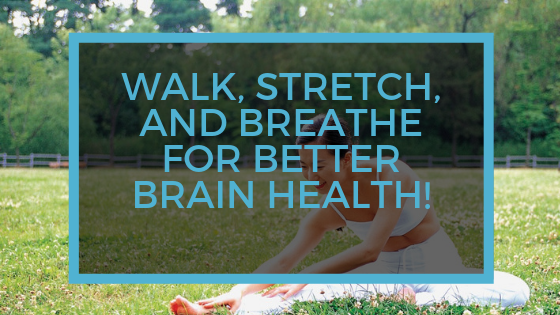
With an increasing amount of research coming out on neurodegenerative diseases, brain health has become a very hot topic. However, when it comes to brain health, many people are focused on a magic ingredient – whether it be food, vitamins, or supplements – that they can take to boost their brain function. While ensuring your body has the appropriate nutritional building blocks it needs for growth, repair, and proper functioning is important, understanding how your body works can help you hack into its natural functions by incorporating simple daily activities to support your brain.
Read more: Walk, Stretch, and Breathe for Better Brain Health
I’m Tired of Being Tired! How Head Injuries Can Prevent You from Getting a Good Night’s Sleep
Understanding My Symptoms: Vertigo vs Dizziness
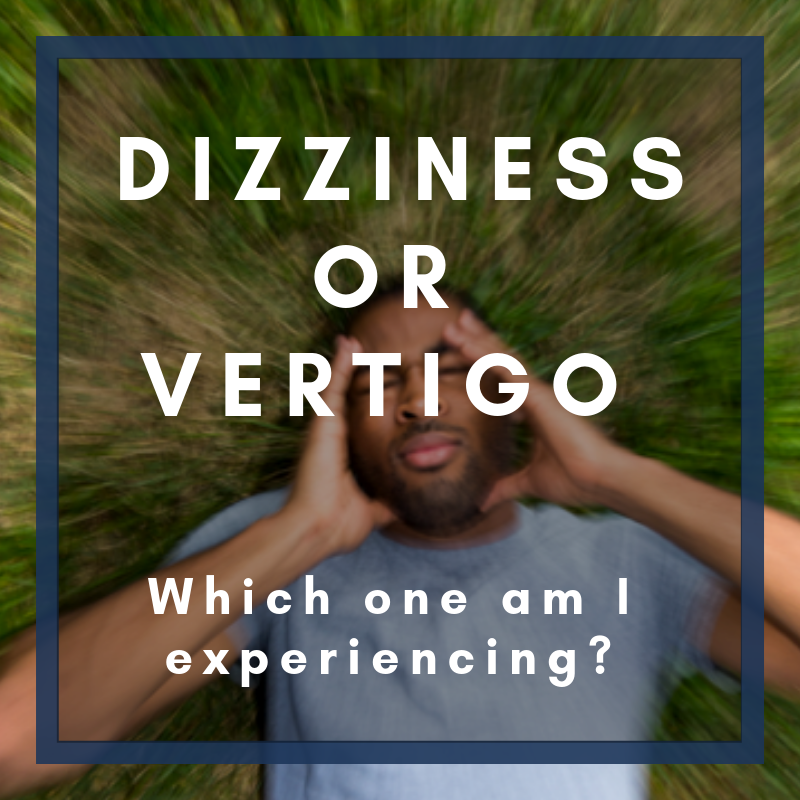
Dizziness is a strange phenomenon, and anyone who has experienced it will understand how difficult it can be to describe the feeling. Dizziness can mean very different things to different people, and descriptions may include: a spinning sensation, a feeling of light headedness or faintness, unsteadiness/off balance, feeling like the floor is rocking, a floating sensation, fogginess, or disorientation.
Four simple ways to boost your brain function

An invisible illness you may have not heard of: Dysautonomia
I recently had the privilege of attending the Dysautonomia International annual conference where healthcare practitioners, patients, and caregivers from all over the world came together for a weekend to connect and learn about the various facets of dysautonomia.
Read more: An invisible illness you may have not heard of: Dysautonomia
Are some sleeping positions better than others?

In our high tech, fast paced world full of flashing lights and bells and whistles, we now have the ability to simulate daytime 24/7.
Clear out your brain’s cobwebs
Do you ever feel like you are living in a fog, feeling disconnected from your activities and the people in your life?
6 tips to help you get a rejuvenating sleep!
Sleep. You know you need it, but are you actually getting enough? In our high paced modern society, sleep is often sacrificed at the expense of meeting a deadline, attending a social function, or watching just one more episode on Netflix.
Your Brain’s Sewage System
If you have ever had a sink clog up, then you know that it may still be able to eventually drain its contents but at a much slower rate than usual; consequently, you will also be left with all the dirty scum on the outside to clean up.
Ancient Stress Hacks for Living in a Modern World
Did stress kill the caveman? Everyone has heard the phrase ‘stress is a silent killer’. While one stressful episode won’t kill you, long-term, uncontrolled stress often lies at the root of several chronic diseases, which can.
Read more: Ancient Stress Hacks for Living in a Modern World


